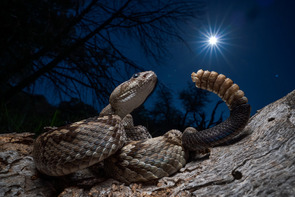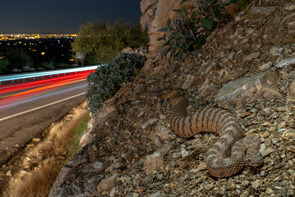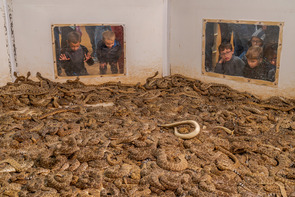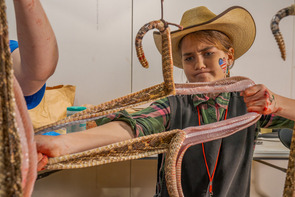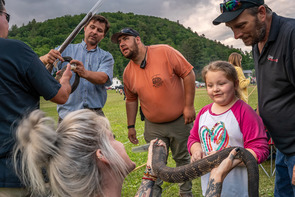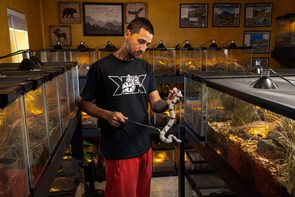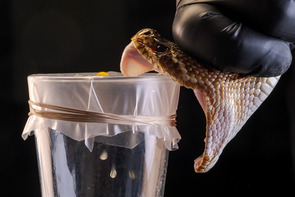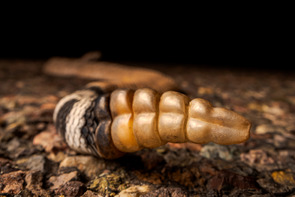Winner: Javier Aznar – Spain
Javier Aznar is a Spanish professional photographer specialised in natural history storytelling, wildlife conservation, and the intricate relationship between humans and the natural world. With a background in biology, his photographs aim to offer a personal perspective on nature in its wildest and most captivating state. Javier firmly believes in the power of photography as a tool to help preserve the planet and its biodiversity. Javier hopes his work will raise public awareness of the urgent need to protect wildlife.
Javier Aznar is an Associate Fellow of the International League of Conservation Photographers (iLCP) and a member of The Photo Society. He is also a contributing photographer for National Geographic Magazine, and his work has appeared in international publications including GEO, Smithsonian Magazine, Ranger Rick, and BBC Wildlife. Javier is a Sony Imaging Ambassador.

Project: Love, hate and rattlesnakes
Rattlesnakes have been revered as symbols of renewal and reviled as emissaries of the underworld. Hunted and harassed into the dark corners of our imagination, they evoke a mix of fascination and fear. But can our apprehensions and prejudices be dispelled before these iconic creatures of the American West vanish from our landscapes? This story explores the complex relationship between humans and rattlesnakes, particularly in the American West.
Throughout history, rattlesnakes have held profound cultural significance. The Hopi people of the Southwest regarded them as messengers of life-giving spirits, while the Aztecs and Maya associated them with rain and planting seasons. Early European settlers admired their strength and vitality, and the rattlesnake became an emblem of American patriotism – most notably depicted on the flag of Gadsden, Alabama, which bears the motto: “Don’t tread on me.”
Despite their cultural significance, rattlesnakes have been subject to widespread persecution. In the past, American communities offered bounties for dead rattlesnakes, and thousands were killed every year in the name of human safely. The annual Sweetwater Jaycee's World's Largest Rattlesnake Round-Up, which was initiated in 1958 and continues to this day, draws thousands of visitors annually and generates significant income for the local community. During the event, snake hunters collect rattlesnakes for their skins, venom, and meat, often employing brutal practices such as decapitation and unregulated venom extraction.
In contrast, some round-ups, such as the one in Morris Township, Pennsylvania, have shifted toward educational events. Here, the focus lies on the ecological role of rattlesnakes and the opportunity for the public to engage with these special animals. Most snakes captured at these gatherings are later released back into the wild.
This photo story raises serious ethical concerns about traditional rattlesnake hunting and underscores the vital ecological role that these animals play in controlling rodent populations and promoting biodiversity. The snakes' venom also holds considerable medical value, contributing to cancer treatment, blood pressure regulation, and antivenom development.
Conservationists are working to protect rattlesnake populations. Yet changing public perception remains a formidable challenge, as fear and misinformation persist. This story calls for a shift in perspective – one that encourages respect and protection for these misunderstood creatures before they disappear from the landscapes they have inhabited for millennia.
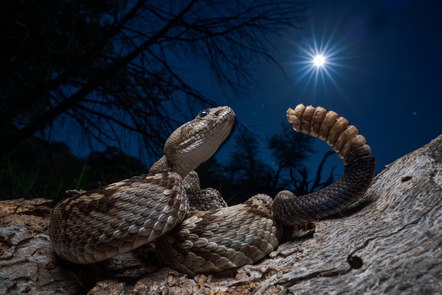
Saved from certain death
When temperatures drop, rattlesnakes are often drawn to warm asphalt. As ectothermic animals, snakes must actively maintain an elevated body temperature in order to remain mobile – for example to be able to forage. This black-tailed rattlesnake (Crotalus molossus) was gently moved to the roadside by a driver who feared it might otherwise be run over. Roads present a serious hazard to snakes as they bask on the tarmac or attempt to cross thoroughfares that transect their territories. Rattlesnakes play a vital ecological role by controlling rodent populations and maintaining a balance between predators and prey. Their venom is also an important resource for modern medicine. Despite their fearsome reputation, these fascinating creatures are essential in a functioning ecosystem.

Etched in stone
Rattlesnakes were revered by many Indigenous cultures. This petroglyph depicting a rattlesnake is located at the Painted Rock Petroglyph Site in Maricopa County, Arizona. The site contains over 3,800 petroglyphs on 428 boulders and is believed to have been created by the Hohokam people some 1,400 years ago.

Life on the edge
I encountered this tiger rattlesnake (Crotalus tigris) in the rocky foothills of the Catalina Mountains near Tucson, Arizona. The hilly landscape offers ideal habitats for wildlife. Unfortunately, vehicle traffic on the many roads criss-crossing the area poses a lethal threat to many of the animals.
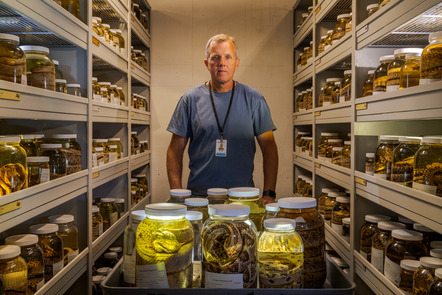
Museums as sources of knowledge
Dr Brad Hollingsworth, Curator of Herpetology at San Diego Natural History Museum, presents the museum’s rattlesnake collection. This extensive archive was founded in the 1920s by the pioneering herpetologist Lawrence Klauber. While far fewer snakes are collected today for scientific study, such historical collections remain invaluable for modelling population trends and conducting other research. In fact, new species are still being discovered from old specimens – in 2020, a new species of Mexican rattlesnake was described based on material collected in the 1930s.
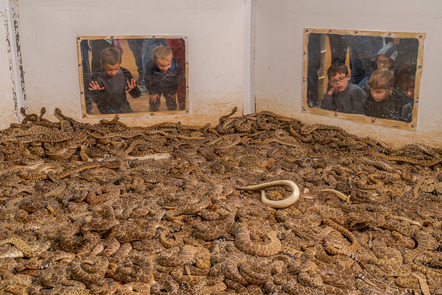
Death row
Curious children watch as hundreds of western diamondback rattlesnakes (Crotalus atrox) are piled into a pit during the Sweetwater Jaycee's World's Largest Rattlesnake Round-Up. Many of the snakes will later be decapitated, while others succumb within the pit. Started in 1958, the Sweetwater Jaycee's World's Largest Rattlesnake Round-Up is held annually at the Nolan County Coliseum in Newman Park, Sweetwater, Texas. Hundreds of snakes are captured in the wild and sold to the round-up. After being measured, sexed, and having their venom extracted, the animals are killed so that their skins, meat and selected organs can be sold.
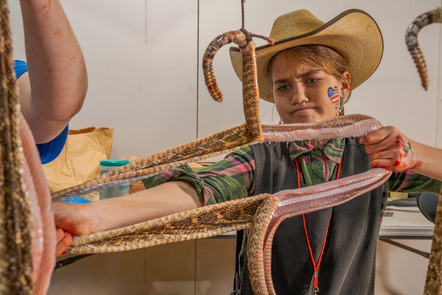
A bitter end
During the 2020 World's Largest Rattlesnake Round-Up in Sweetwater, Texas, the young volunteer Kaydence Matschek skins a western diamondback rattlesnake (Crotalus atrox). After being decapitated with a machete, snakes are skinned by volunteers and paying visitors. Blood and a nauseating stench pervade — a truly horrible scene.
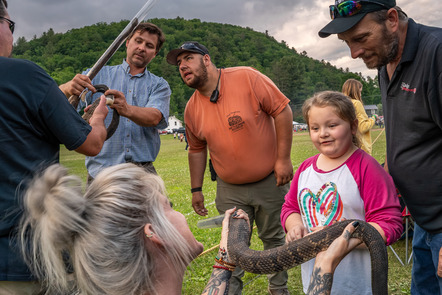
Education for conservation
Stacy Foster presents a timber rattlesnake (Crotalus horridus) to visitors during the Annual Rattlesnake Round-Up organised by Morris Township Fire Company in Pennsylvania. The event includes a flea market, a softball tournament, and a variety of other activities. Every June, hunters holding a legal collection permit can participate in the competition for the largest and heaviest rattlesnake, with trophies awarded to the winners.
In the 1960s and early 1970s, snakes at such events were typically killed and eaten. Today, the focus lies on education. Organisers inform the public about the ecological value of snakes, allowing visitors to observe and touch the animals. Most snakes are later returned to their capture site. However, it remains in the discretion of the permit holder whether to release or kill the animal. Provided certain criteria are met, a permit allows for the capture, possession, and killing of timber rattlesnakes. Only specimens above a minimum size and with 21 or more subcaudal scales on the underside of the tail may be taken.
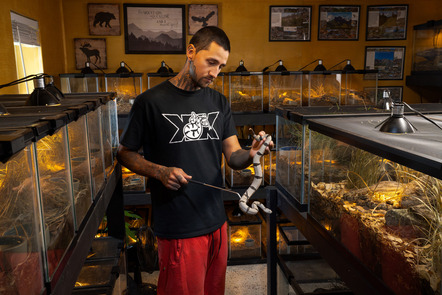
A unique collection
Kyle Vargas showcases a banded rock rattlesnake (Crotalus lepidus klauberi) from his private collection. His fascination for snakes began at the age of fifteen when he encountered a uniquely patterned specimen in western Texas. Today, with nearly two decades of experience, Kyle is one of the few people to have successfully bred this species in captivity.
The banded rock rattlesnake inhabits the dry highlands of the southern United States and Mexico up to 3,000 metres elevation. Its diet includes lizards, birds, invertebrates, and small mammals. While still relatively widespread within its range, the species is increasingly threatened by habitat loss and the wild-capture trade.
Kyle’s collection now numbers around 400 snakes representing 20 species. Unlike many private keepers, he houses the reptiles in enclosures designed to replicate their natural environment using native soil, wood, and vegetation. Although Kyle legally collects snakes in the wild, he takes care to rotate collection sites in order to minimise his ecological impact. Maintaining the delicate balance between passion and preservation is challenging. Keeping rattlesnakes remains prohibited in some U.S. states, and the Smithsonian Institution has identified the pet reptile trade as a threat to the conservation of such species.
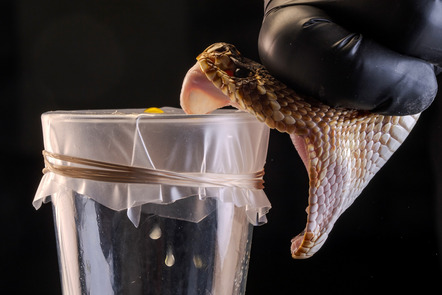
Healing poison
Nathaniel Frank extracts venom from an eastern diamondback rattlesnake (Crotalus adamanteus) at the MToxins Venom Laboratory in Wisconsin. Nathaniel, founder and owner of MToxins, is an expert in venom extraction and has made significant contributions to antivenom production and toxin research. The extracted venom is distributed globally for medical research with the goal of advancing basic research and the treatment of a range of illnesses.
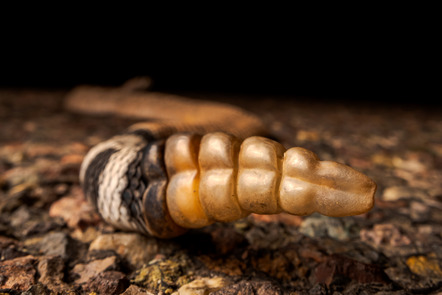
The famous rattle
Rattlesnakes are named for the distinctive rattle at the end of their tails. This structure is composed of hollow, interlocking segments of keratin — the same protein found in human nails and hair. When a rattlesnake vibrates its tail, the loose segments clatter against one another, producing the characteristic rattling sound that serves as a warning signal. Internal air chambers amplify the sound. With each moult, a new segment is added to the rattle, allowing it to grow throughout the animal’s lifetime. Remarkably, the tail muscles of a rattlesnake can contract up to 100 times per second, producing the snake's characteristic rapid rattling.









